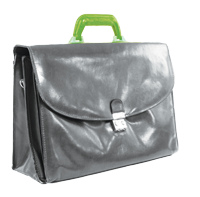Gender attitudes and stereotypes can and do shift over time. To achieve gender equality in Australia, rigid attitudes and behaviours around gender need to keep changing. This means challenging stereotypes that limit how people behave, are perceived and are treated at work, at school, in relationships, in their homes, online and by their communities.
Every priority area in this Strategy is underpinned by gender attitudes and stereotypes.
Modelling from Deloitte Access Economics shows that abandoning prescriptive gender norms could grow Australia's economy by on average at least $128 billion a year.Note 11
While there have been improvements in recent years, shifting attitudes around gender can be a slow and stubborn process.Note 12 A 2023 Plan International survey found that 17% of people believe gender equality is no longer an issue in Australia and that change for equality for women had gone too far.Note 13 Almost one in 4 people believe that much of what is called domestic violence is a normal reaction to day-to-day stress and frustration.Note 14
Gender attitudes impact choice, behaviour and outcomes:
- Women and girls have historically been seen as caregivers and raised to be polite, accommodating and nurturing. These stereotypes can contribute to women and girls spending more time doing unpaid care at home and being less seen in leadership positions.
- For men and boys, pressure to be dominant, commanding and stoic can impact physical and emotional health – in particular, their willingness to seek health care for mental health conditions. Stereotypes can dissuade men from taking on care roles and can shape career choices, including by steering them away from roles and interests that are traditionally considered feminine.
- For all people, especially gender diverse people, identifying and expressing gender outside the traditional gender binary can result in violence, discrimination, stigma and exclusion. This can limit people's participation in society and lead to poorer economic, health and social outcomes.
- Gender stereotypes can interact with other stereotypes, including those perpetuated by racism, ableism, ageism, homophobia and prejudice about socio-economic status, compounding the discrimination a person experiences. Cultural and religious beliefs interact with gender norms in a complex and nuanced way.
- Rigid attitudes and stereotypes can lead to sexism and are a driver of men's violence against women. They can be internalised by boys and girls from a young age and guide what they see as acceptable behaviour. They can encourage some boys and men to be dominant, aggressive and controlling towards women in both private and public life.
Government action across priority areas can help to drive practical change on gender norms. This includes work under the National Plan to End Violence against Women and Children 2022–2032; the Government's Paid Parental Leave Scheme, which has been reformed to encourage uptake from men and more shared care between partners; and efforts to reduce gender segregation in industries and workplaces. The Government can further develop the evidence base on how society views women and girls, demonstrate equality in its leadership and public service, and explore options to improve the representation of women in media and advertising reforms.Note 15
But the Government alone cannot change individual attitudes. The collective action of individuals, families, communities, workplaces and institutions is needed to address the barriers that hold Australia back from making gains towards gender equality and retaining this progress into the future.
Change is needed at a community level – with families, educators and community leaders modelling positive attitudes and challenging rigid ideas about gender in homes, educational institutions and neighbourhoods. Shifting how children understand stereotypes from an early age can have long-term impacts by changing how boys and girls view themselves and opening up more choices later in life.
All workplaces have a responsibility to ensure that decisions on recruitment, promotion, role allocation and access to flexible work are not influenced by gender bias or assumptions.
There are a number of industries with significant influence over gender norms. These industries produce and amplify content that shapes people's ideas about what it means to be a woman or a man, and attitudes towards gender. For example, the tech industry is responsible for many products that change the way people think about gender and must be proactive in ensuring gender bias is not built into new technologies. Adopting Safety by Design principles, including through the guidance offered by the eSafety CommissionerNote 16, would contribute to this effort. The media and entertainment industry, also, must consider how depictions of gender affect and reinforce people's attitudes.
Over the course of the Strategy, the Government will measure progress towards attitudinal change in Australia through the following key outcomes:
- community attitudes and beliefs in Australia reject gender inequality
- people are not limited by gender roles.
How gender norms can shape people's lives: the story of Priya and Luca
This is the story of 2 children – Priya and Luca – and how their lives unfold when there are limiting societal gender norms and when there are no limiting gender norms. This is an illustrative story only. Not everyone goes through each of these life stages in the same way and how gender norms might shape a person can also change depending on their unique experiences and identities.
| In a world with limiting gender norms | In a world without limiting gender norms | |
|---|---|---|
Childhood and home life Image

| Priya and Luca grow up in the same city. In both homes, their parents have a 'traditional' division of labour – their dads work during the week, and their mums are primary caregivers who do all the cooking and cleaning. On weekends, their dads mow the lawn, wash the car and watch sport with the children. Their mums do the groceries, using the housekeeping money allocated by their dads. Their mums also take on more of the 'mental load' of running a household, organise birthday parties and costumes for school events, and take them to the doctor if they are sick. Their dads decide where they go for holidays and what they watch on TV. Priya and Luca learn men should be strong, competitive, and the breadwinners and decision–makers for their family. They learn that women are better at caring, housework and organisation. The chores Priya and Luca do at home are consistent with what their parents do. Priya helps in the kitchen and Luca works outside. Luca receives pocket money for his chores because they are set jobs, whereas Priya is just helping mum out. | Priya and Luca's parents share housework and caring equally. Each parent spends time caring for their children solo, as well as taking their children to school, sports practice, birthday parties and the doctor. Both children do activities that interest them. Priya enjoys learning about dinosaurs and playing with trucks and dolls. Luca talks about his emotions with his parents and friends because it helps him understand his feelings and be happier. They both learn to cook and wash a car from an early age. They decide as a family what to watch on TV and where to go on holiday. Priya and Luca both receive equal pocket money for doing chores around the house. Priya mows the lawn and takes the rubbish out, and Luca does the dishes every night after dinner. Both children know their parents do important work. |
Education Image

| Priya thinks that boys are smarter than her, even though she gets better grades. She also experiences racism on the playground. She becomes less confident and quieter in class. Luca doesn't study the subjects he finds most interesting in school because he thinks they are 'girly'. He is interested in teaching, but doesn't think he can do it because most of his teachers are women, and he thinks he's not 'naturally caring'. At school, Luca learns woodwork while Priya learns textiles. | Priya and Luca learn from their teachers that men and women are equally capable. They see their role models working in a diverse range of fields. Both children have the chance to learn a lot of skills, including life skills like cooking, sewing and car maintenance. Priya and Luca are encouraged to take up hobbies, subjects and jobs that align with their interests. Priya takes physics and plays mixed rugby in a culturally diverse team, while Luca chooses to take a visual arts elective and joins the choir and the basketball team. |
Career Image

| Priya graduates from university and gets a job as an office manager at a law firm. There are no men working in the administration of the office, and only a few female partners. At work, one of Priya's bosses sexually harasses her. She is uncomfortable and frightened, but doesn't want to make a fuss, especially after another manager insists it's 'not a big deal' and she should 'learn to take a compliment'. She doesn't lodge a formal complaint. Luca becomes a tradesperson at his dad's company and is quickly promoted to a senior position. The long hours and leadership pressures take a toll on Luca's mental health, but he doesn't seek professional help because he thinks it is a sign of weakness. He also doesn't know where he can get help since none of his friends or role models ever talk about their own mental health. | Priya pursues her interest in advocacy and becomes a lawyer. She is respected by her colleagues, and speaks up and takes on new leadership positions. Her firm has strong policies around safety, respect and inclusion that are part of workplace culture. Priya is regularly promoted. Her salary rises in line with her male colleagues, which she knows since her firm publishes its gender pay gap information to the Workplace Gender Equality Agency. Luca pursues his interest in helping others and becomes a teacher. He feels comfortable talking about his mental health and reaches out for professional help when he needs. He enjoys teaching drama and science. |
Relationships and having children Image

| Priya and Luca get married and have 2 children, a boy and girl. Luca's male co-workers didn't take parental leave when they had babies, so Luca doesn't either. Luca really loves his children but doesn't feel comfortable caring for them without Priya. He doesn't know many dads and isn't sure he's a good dad. Priya takes the bulk of parental leave as the 'primary carer' in their home, just like her mum did. She doesn't receive superannuation while on leave. The cost of child care means the family choose to have one parent work part-time. Priya decides to work part-time since she is 'naturally better' with the children and Luca's job doesn't support part-time work. When the children get sick, Priya stays at home. Priya arranges child care, then school and school holiday care. She organises the children's birthday parties and extracurricular activities, while Luca takes them to play sport. Priya balances this with looking after her aging parents. When a promotion opportunity comes up at work, Priya's male colleague – who recently graduated from university and joined the administrative team in the firm – gets it. Priya has more experience but is seen as less ambitious due to her part-time arrangements and time away from work on parental leave. | Priya and Luca support each other and their ambitions. They both take parental leave to care for their children, and join a local parenting group together where they make friends with other new mums and dads. They both form strong relationships with their children. Luca enjoys cooking dinner and reading the children bedtime stories, and Priya loves taking them for swims at the local pool. When they return to work, Priya and Luca both work part time for a while. They continue to split domestic work and caring responsibilities equally. When the children are sick, they take it in turns to take time off to care for them. They both work flexibly to share school pick and drop off, and participate in school activities. Luca volunteers for canteen duty once a week and Priya coaches the soccer team. Priya and Luca value each other's perspectives. When making decisions, they discuss and agree them together, including how to manage their finances and how to raise their children. They are openly respectful and caring and are positive role models for their children. |
Retirement and later life Image

| Priya has much less superannuation than Luca but retires earlier than planned to help look after her new grandchild. Priya knows this means that she will be financially dependent on Luca later in life. Priya and Luca move into an aged care facility, where a majority of their care workers are women. Their daughter visits them regularly and helps with their groceries and medical appointments. Their son visits occasionally since he is very busy with work. | Priya and Luca both retire from fulfilling careers. They feel that they have made an impact through their careers. Priya has a healthy superannuation balance and feels confident in her retirement plans. Priya and Luca move into an aged care facility, where there is gender diversity across their care workers. They have a strong relationship with their children, who both visit them regularly and support them as they age. |
Source: This diagram is based on the life course model in Breaking the NormNote 17 and the drivers of violence in Change the Story.Note 18